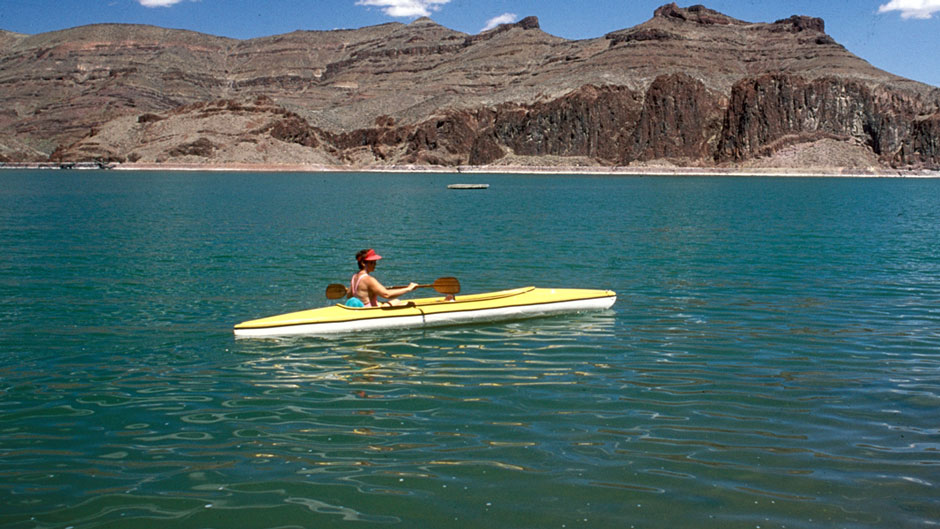
Area reservoirs, like the Owyhee (above), are running low, potentially creating serious challenges for Malheur County’s agriculture industry next year. (The Enterprise/File).
VALE – Mother Nature’s water bank account is nearly overdrawn.
Reservoirs that furnish the muscle behind Malheur County’s multimillion-dollar agriculture industry are dangerously low. Unless Mother Nature delivers above-average snowfall, the farmers in the region could face severe water shortages in 2019.
“We’d hoped to have some fall rains to recharge after the summer and unfortunately we haven’t had any fall precipitation,” said Scott Oviatt, a hydrologist for the Natural Resources Conservation Service.
As of Nov. 15, four of the five local reservoirs were nearly empty.
The Bully Creek Reservoir was 3 percent full, Warm Springs was at 3 percent, Beulah, 11 percent and Owyhee, 32 percent.
Last year at this time, Bully Creek was at 33 percent full, Warm Springs was 54 percent full, Beulah was 28 percent full and Owyhee was 61 percent full.
To fill those water basins will take snowpack. The more snowpack, the more water will flow into the reservoirs during spring runoff. The amount of water each reservoir holds, on average, for this time of year varies depending upon the snowpack.
Snowpack is gauged on what is called its water equivalent – or the amount of water in the snowpack.
Now, the water equivalent in snowpack across the region is about 30 percent of the 30-year average for this time of year, according to the Natural Resources Conservation Service.
While that indicates the region is dry, it isn’t as dry as central Oregon, where the water equivalent of the snow pack is just 5 percent of the 30-year average.
The low water marks in the local reservoirs already represent trouble, said Oviatt.
“It is exactly the scenario we didn’t want to see. We have to anticipate lower amounts of instream flows. Unless we get a complete turnaround, we should expect shortages,” said Oviatt.
Ron Jacobs, Malheur County’s state watermaster, said the upcoming irrigation season would, as always, depend on what happens this winter.
“If we don’t get some moisture this fall then have some snow on top of it, it could be pretty slim. We will keep our fingers crossed but it (snowpack) needs to be above average or at least average to get us through next year,” said Jacobs.
So far the weather isn’t helping, said Oviatt.
“Right now, we are getting a split jet stream. It is going south and north of us. The storms are bypassing Oregon,” said Oviatt.
While the jet stream is expected to shift, when that occurs will be crucial, said Jeff Burkhardt, a Vale farmer.
“The amount of water doesn’t matter as much as timing. We just need the right snow at the right time,” said Burkhardt.
A shortage of the wet stuff creates challenges for producers, said Stuart Reitz, county extension agent.
“People have to decide where they can plant crops and what crops they can plant,” said Reitz. “You wind up disrupting your rotations.”
That’s because, he said, local farmers move crops to a place where they have a better water supply, leaving fields intended for planting fallow.
“If you leave ground fallow it gets all weedy. So, then it takes more effort to bring it back to a good condition. You can have a lot of additional problems,” said Reitz.
A water shortage would also impact the county’s $80 million onion industry.
Grant Kitamura, general manager and part owner of Baker & Murakami Produce Co. in Ontario, said there is a “great deal of concern” about the low reservoir levels and what that means for the 2019 harvest.
Less irrigation, he said, eventually means lower volume on the crop, which in turn means a lower profit.
“You can plan for it, hope and pray but I don’t know what else you can do,” said Kitamura.
Oviatt said the region would need an epic winter to recharge.
“We’d have to have, as this point, near record snowpack to rebound,” said Oviatt.
Harvey Manser, assistant manager of the Owyhee Irrigation District, said farmers and irrigation officials were worried about water carryover going into the 2018 harvest.
“And right now, it isn’t looking good,” he said.
Manser said his district began the 2018 year operating in a drought mode. That meant, he said, sticking to a specific water allotment.
“We only allowed their four feet and nothing extra,” he said.
Manser said the district is “really concerned” about the 2019 water year, especially its impact on the economy.
“The lifeblood of this valley is agriculture,” he said.
Reporter Pat Caldwell: [email protected] or 541-473-3377.




